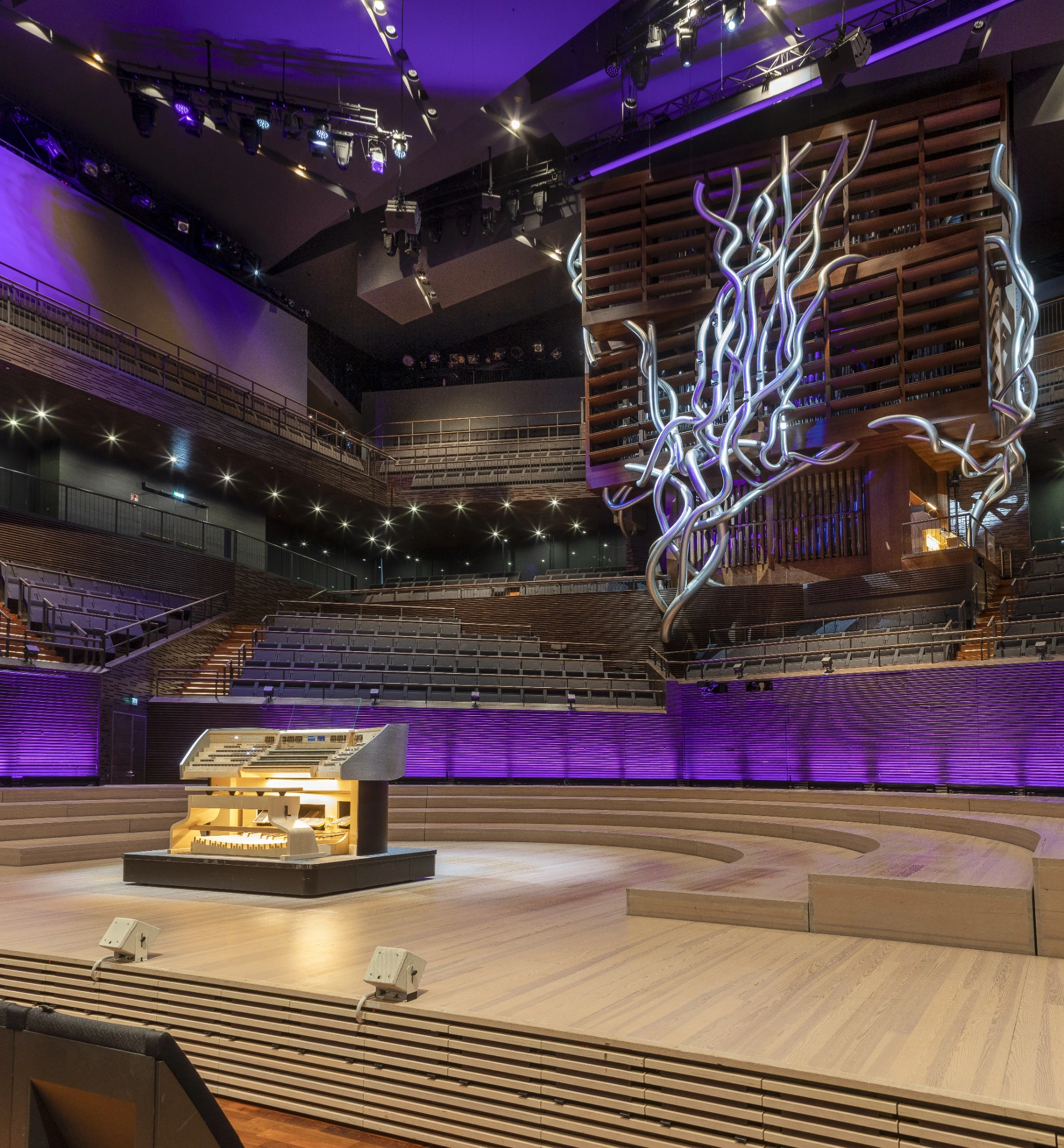
3. The organ’s facade and technical features

3. The organ’s facade and technical features
You are now on the right side of the organ. This is the last point of our tour, where we will take a closer look at the organ's construction and technology. We'll cover the organ's appearance, pipework, polyphony, computer technology and microtonality. I will first tell you about the organ façade. You can move to other topics by returning to the home page and choosing the next topic.
For now, let's focus for a moment on the organ's appearance. Marko Kivistö, chief architect of Musiikkitalo, has described the organ as "a work of art that is allowed to stand out like a beautiful, shiny piece of jewellery in a dark velvet evening dress."
But the organ's facade is not just decoration: outside the dark, oak-panelled organ case are ten 3D-printed pipes, plus air ducts. The pipes and air ducts on the façade are made of Finnish biocomposite. It is made from a combination of recycled plastic and wood-based cellulose fibre. Previously, organ pipes had not been made from this material; and the designers of this organ were in fact a bit surprised that the biocomposite sounded so good.
The pipes that curl up in the facade produce low bass sounds. But the lowest sounds come from the even larger pipes, which are about 10 metres high. These wooden pipes are located on either side of the organ cabinet. The highest sounds come from the smallest pipes, which are only 8 millimetres long. These are located inside the organ cabinet, as are most of the other pipes.
The facade of the organ in Musiikkitalo is unique: nothing like it has ever been built before. The facade was designed by Harald Schwarz and Wendelin Eberle of the organ building company Rieger Orgelbau.

